
A gout patient suffering from gout in the shoulder
Gout in shoulder is one of the many causes of shoulder pain. Usually, gout affects the small joints of the extremities, especially the big toe joint, but it happens, although rarely, to target other joints such as the knee, ankle, hip, elbow and shoulder, and even the neck and back.
In this article, we will look at gout in the shoulder, its causes, symptoms, similar medical conditions and diagnosis, and how to treat it efficiently.
Can you get gout in your shoulder?
Gout dates from ancient times, it’s a common inflammatory arthritis caused by high levels of uric acid in the blood, called hyperuricemia.
Excess uric acid accumulates in and around the joint space in the form of tiny needle-like crystals, which will be attacked by our immune system as perceived as foreign bodies.
But, Can you get gout in your shoulder. Gout can settle in shoulder joints when our blood is saturated with uric acid (generally above hyperuricemia level of 7mg/dl) and when the shoulder joint is inflammed or injured, such as rotator cuff tears, attracting urate crystals to settle there.
Major risk factors are a high purine diet, a stressful less-active lifestyle, obesity, high blood pressure and kidney disease or certain medications such as diuretics. Other risk factors, infectious disease, shoulder overuse or rotator cuff tears due to an intense physical activity.
Uric acid is a natural byproduct of purines, natural substances found in our bodies or come from the foods we eat. High levels of uric acid in our body are caused by high production of uric acid or low kidney function (low excretion capacity).
In the long-term management of chronic gout, it is always advisable to avoid anything that increases uric acid production and opt for anything that lowers uric acid levels.
Exactly, you need to avoid high purine foods and beverages, consider effective home remedies for gout, such as drinks that help flush out excess uric acid or neutralize it, and maintain an active, stress-free lifestyle as much as possible.
Keeping healthy weight will limit as well the uric acid body’s increased production and reduce inflammation in general.
What does gout in the shoulder feel like?
A Gout attack in the shoulder, like in any other affected joint, often causes sudden and painful inflammation, with the shoulder pain can spread as well to the upper arm bone.
Sending infection fighting cells (white blood cells), the immune system attacks uric acid crystals deposited inside the synovial fluid of the shoulder joint cavity, causing inflammation and intense pain.
The affected shoulder during a flare will be:
- Red and Hot
- Swelling and tender
- Stiff and difficult to move.
What can be mistaken for gout?
Several medical conditions mimic gout and cause shoulder pain. Accurate diagnosis is very important for effective treatment and fast relief.
Your doctor will often proceed by asking you about your symptoms and medical history. They may order blood and imaging tests, such as X-ray, MRI (magnetic resonance imaging) or Ultrasound test.
In addition to physical examination, the doctor may also opt for a joint fluid aspiration test, which involves taking a sample of the synovial fluid from the shoulder joint, checking under a microscope for the presence of urate crystals.
The following conditions can be mistaken for gouty arthritis in the shoulder. The diagnosis phase serves in particular to rule them out, as they cause all severe shoulder pain:
- Pseudogout
- Bursitis
- Frozen shoulder
- Tendonitis and rotator cuff tendon tears
- Osteoarthritis
- Septic arthritis
- Rheumatoid arthritis
- cellulitis or skin infection
What is pseudogout in shoulder?
Pseudogout shares the same name and symptoms as gout, but the cause is different.
Pseudogout, also called CPPD, is caused by the buildup in the affected shoulder joint of calcium pyrophosphate crystals, causing irritation of the joint cartilage and inducing, as in the case of gout, immune system infection fighting cells attacks which causes inflammation and intense shoulder pain.
How do I know if I have gout or bursitis?
Bursitis is the bursae inflammation, fluid-filled sacs that cushion and protect our muscles, tendons and skin from friction with the bones as our joints move.
This acute inflammation usually happens due to overuse, injury to the joint or bursa, or infection. Bursitis is one of the major causes of shoulder pain, it has symptoms similar to gouty arthritis and is common in the shoulder joint, knees, elbows, hips and heels.
If it is septic (infectious), the diagnosis may be more obvious because the bacteria must enter the bursa directly, which will suggest a wound in the surrounding area.
Other causes of septic bursitis are infections of the skin (cellulitis), blood or joints (septic arthritis).
How do you treat gout in the shoulder?
Gouty arthritis involves a treatment plan that includes medications or natural remedies or both to:
- Relieve pain and swelling quickly, such as Dr. Elix’s gout pain relief, NSAIDs (over-the-counter or prescription drugs like indomethacin), or Corticosteroids (oral or injected prednisone).
- Inhibit immune system attacks, such as colchicine.
- Lower uric acid production, such as Xantine oxidase inhibitors drugs (Allopurinol, Febuxostat).
- Promote the elimination of uric acid by the kidneys, such as Uricosurics (Probenecid).
We highlight the availability of effective, research-backed home remedies for gout to lower uric acid levels through both uricosuric and production limitation effects.
As the mentioned drugs have dangerous side effects and interaction possibilities with certain medications, natural remedies for gout will take care of your whole health including the underlying causes of gouty arthritis such as high blood pressure, heart and kidney disease, and diabetes.
Moreover, opting for friendly physical therapy exercises will attract healthy, oxygenated blood to your shoulder joint while flushing out inflammation and swelling fluids, especially dangerous free radicals, speeding up your joint soft tissue healing and thus relieving your shoulder pain (Dr. Elix gout pain relief is the best gout treatment to help you reach that therapeutic goal quickly. Guaranteed).
With these simple tips you cannot develop complications instead you’ll be able to reverse gout in the shoulder!
How do I get rid of gout ASAP?
There are 2 ways:
- The 1st option : Use NSAIDs to ease pain and inflammation, you can support by putting an ice pack on your joint, drinking water up to 16 classes a day during the flare-up. Also, rest you joint and avoid anything that can increase your uric acid levels or slow its excretion. Then you call your healthcare professional for more support and guidance.
- The 2nd option: Apply Dr. Elix’s gout remedy for Immediate Gout Pain Relief & Crystals Removal to relieve gout pain and symptoms quickly as well as to break up and dissolve deposited uric acid crystals, effects that instantly stop a gout flare-up (in 7-15 minutes). Additionally, Dr. Elix gout pain relief has powerful analgesic and anti-inflammatory properties along with a combination of antibacterial, antiseptic, super antioxidant and rapid joint tissue healing therapeutic benefits.
It is always recommended to drink enough and stay hydrated to flush out excess uric acid from your body via urine and rest your affected shoulder for the first 2-3 days of the attack.
What are the 4 stages of gout?
Since gout is a silent disease with sudden onset, the first stage of developing gout is asymptomatic but marked with hyperuricemia, a condition in which the level of uric acid in our blood is above 7mg/dl, this is the “Asymptomatic hyperuricemia” stage.
The second stage is marked by the onset of the first acute gout attack, called “Acute gout”, followed by another asymptomatic stage called “Intercritical gout”, and the fourth is the stage of “Recurrent gouty arthritis”, marked by frequent gout attacks, spread to other joints and tophaceous gout (chronic arthritis).
How long does gout inflammation last?
Typically, a gout attack reachs its peak in 12-24 hours and lasts for a few days to a week and then begins to subside, while gout inflammation takes about one to two weeks to fully recover (even without treatment).
If a gout flare is treated immediatly and properly it can be stoped within 1 to 2 days max, and will cause no lasting damage to your affected shoulder joint, providing a solid foundation to prevent future flare ups.
to speed up your recovery and avoid any complications, it is advisable to rest your affected joint for at least the first 3 days of the attack during which inflammation is at its highest level and your joint soft tissues are vulnerable.
Any additional pressure or injury will add to severe pain from the existing inflammation and make it last longer.
Once the pain and swelling start to subside and movement is more bearable, walking and practicing low-intensity, friendly physical activities or physical therapy will be beneficial in reducing inflammation and promoting fast healing.
Bottom line
Gout in the shoulder is not common like gout in the big toe or in the foot, and it is one of the many causes of shoulder pain, which must be ruled out with an accurate diagnosis, ordered and interpreted by your doctor.
Hyperuricemia and inflammation or shoulder injury are the main causes of gout in the shoulder.
An affected shoulder joint is usually very painful and looks red and hot, swollen, tender to the touch, stiff with a reduced range of motion.
To treat gout in the shoulder apply Dr. Elix Gout Pain Relief to relieve pain and to stop a gout flare-up, gout crystals or tophi removal and joint tissues rapid healing, with adequate rest and hydration (up to 16 glasses a day).
To manage chronic gout in the long term, opt for home remedies known to be effective in decreasing levels of uric acid (such as, lemon turmeric and apple cider vinegar with water, cherries, low-fat milk, bananas and celery), and maintain a healthy lifestyle and proper diet.

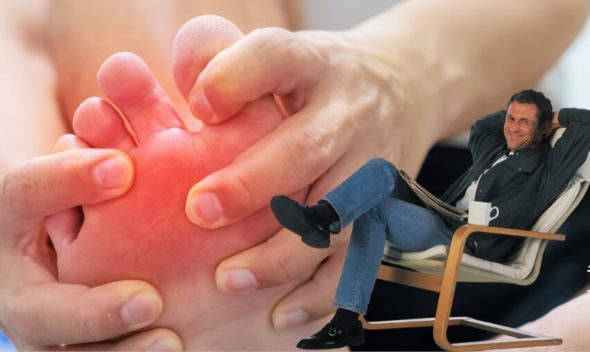

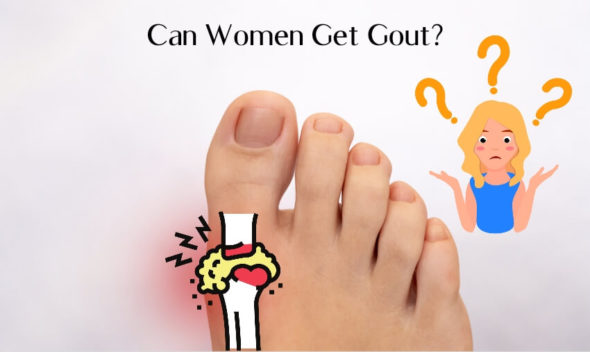

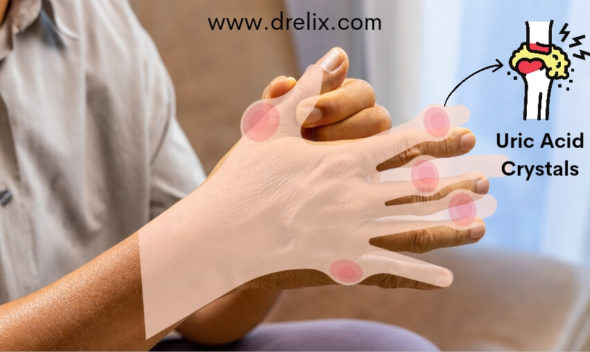
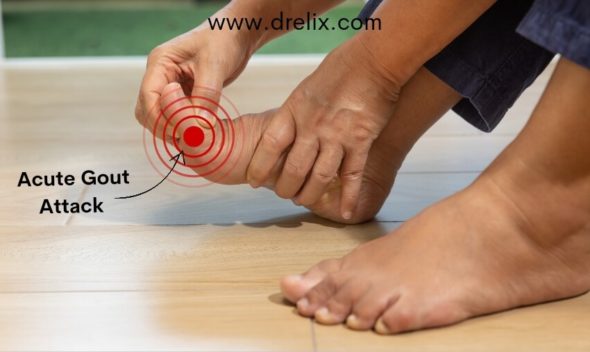
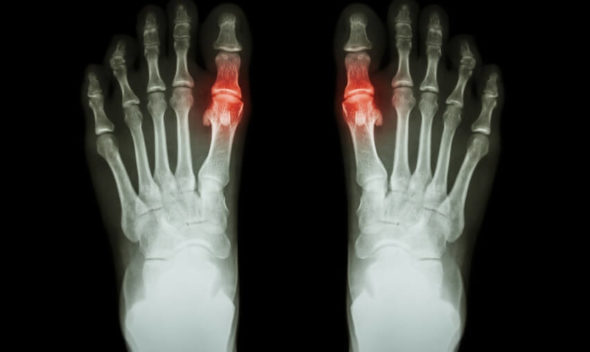





Leave a comment